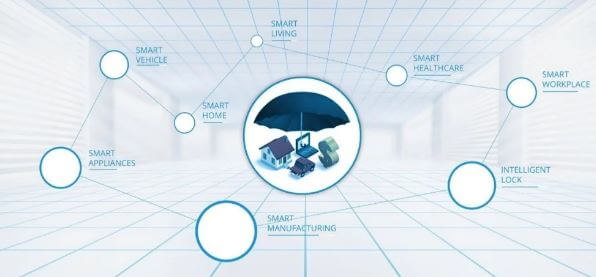Library: The power of the internet of things in commercial insurance
Executive summary:
The internet of things (IoT) has arrived and is rapidly becoming entrenched in the activities we all do every day. But what will it take for the IoT to start benefiting providers of commercial property and casualty insurance?
The potential is certainly there. As of last year, there were 30 billion connected devices in the world; that number is expected to jump by a third, to 41 billion connected devices, by 2025. Today’s devices are already producing 14 zettabytes of data, with numerical or visual information on people, things, and environmental factors. A lot of this data is being generated by equipment and infrastructure that commercial carriers already insure.
Several P&C insurers in Europe and the US have begun experimenting with new services leveraging IoT devices. But a lot remains to be sorted out in what is still a very new area. Carriers that establish a lead in this early period may find themselves with an advantage later on.
The internet of things’ impact on insurance
The quantity and variety of data that businesses produce each day create some sizable opportunities for commercial P&C insurers. (See Exhibit 1.) Here’s a look at the areas of P&C insurance that could benefit the most.
Underwriting
Typically, P&C insurers price risk by looking at statistical models of past loss trends. The IoT builds on that in two ways. First, it creates a situation where real-time data, not just historical data, is part of the risk assessment. Second, the IoT can bring new, potentially very insightful, types of data to the business of calculating risk.
Claims processes
Commercial P&C carriers employ large staffs to evaluate and adjudicate claims; the fact-finding and pinpointing of damages after an insurable event can cost 6% to 10% of premiums and drag on for weeks or even months in the case of a large claim. The process often has a negative impact on customer satisfaction.
Bionic approaches—where machines do the tasks that can be automated and human beings handle the higher-level problem solving—are starting to reverse some of these inefficiencies. Technology is helping claims adjusters offer better or faster service to claimants in situations that involve ongoing danger. This can include flood or fire scenes where drones and other aerial-capture machines must take the initial image. Several companies are developing AI-enabled computer vision tools that can fill this need. Bionic tools are also making important strides in risk prevention and mitigation services, enhancing insurers’ ability to partner with clients.
Customer value propositions
In the past, P&C insurers have predominantly played a risk-transfer role, helping clients offload selected risk exposures. With IoT technology, carriers can move into the area of risk prevention: providing timely advice and alerts to prevent claim events from happening in the first place. This could range from relatively small situations—an alert about an autonomously operated industrial asset that’s about to fail because of a worn-out motor—to much higher-value insights, such as a buildup of temperature or pressure that suggests a plant explosion or leak is imminent. In short, thanks to the IoT, risk prevention may become another arrow in the insurance quiver.
New pay-per-use business models
With the proliferation of connected devices, insurers have the opportunity to reinvent an aspect of their value proposition by moving to per-unit pricing. For instance, a carrier could price insurance for a summer rental property according to when the place is actually in use, the number of people vacationing there, and the risk profile of the renters (adults versus children, say). Sensors could determine all these things, adding a type of flexibility that would benefit both the property owner and the insurer. The pay-per-use trend is already cropping up in personal-insurance lines, including for cars outfitted with telematics devices. But the concept could work for irregularly used commercial assets too, so long as they have sensors attached to them.
Sales and distribution partnerships
Finally, IoT partnerships could open up new channels for insurance sales. All carriers devote substantial parts of their sales budgets to broker and agent commissions. In the IoT-enabled future, P&C insurers could find themselves with other go-to-market options and additional ways of securing business. For instance, manufacturing customers may be able to buy accident and uptime insurance at the same time that they’re purchasing IoT solutions or signing equipment and facility maintenance contracts.
See the full report for more…
Link to Full Article:: click here
Link to Source:: click here

























































